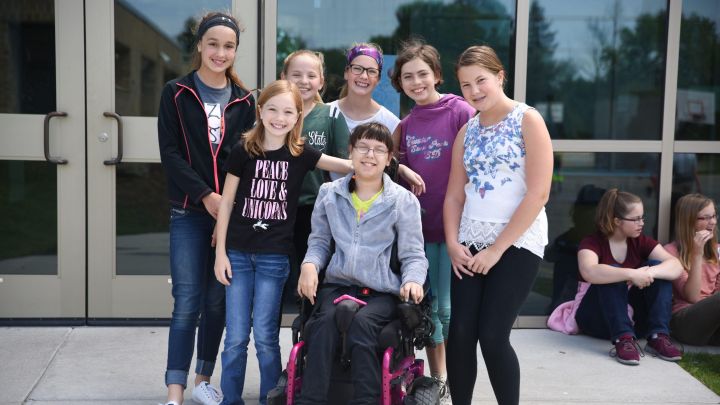Navigating Autism Evaluations: Key Insights for Educators
At All Belong, we envision a world where every child with a disability is known, needed, and experiences belonging in their Christ-centered school. Because of this, we view evaluations as an opportunity for families and schools to work together to know students excellently. By celebrating the unique ways that each student is created in the image of God, our hope is that an evaluation leads to a greater sense of belonging within that student’s community.
Recently, our team at All Belong delved deeply into the topic of autism evaluations during a professional development session for our member schools. Understanding autism and determining when and how to pursue an evaluation can be challenging and filled with questions.
Betsy Winkle, school psychologist, and Katie Kiser, teacher consultant, shared the following key takeaways to guide educators through the process of considering autism evaluations for students.
1. Autism Looks Different for Every Student
Autism spectrum disorder is truly that—a spectrum. It presents differently in every student, with unique strengths and challenges. While some students may exhibit more visible behaviors, like repetitive movements or clear difficulties with social interaction, others, particularly girls, may mask or camouflage these traits, making them harder to recognize. It is important to learn the more subtle ways behaviors related to autism may show up, and to recognize that autism is not something that is linear or easy to identify.
2. Intentional Observation Matters
Any time that you wonder about challenges that a student is experiencing, intentional observation is a good place to start. By observing the student across a variety of settings and activities over time, you will gain a more complete understanding of their behaviors. You might notice patterns of social, sensory, or communication challenges emerging, including restrictive or repetitive behaviors. Paying attention to these patterns can help a team decide how to best support and advocate for the student. While not a diagnostic tool on their own, effective observations can inform the next steps for the professional staff working with the student and can support conversations with parents. If an evaluation is pursued, intentional observation will provide valuable information for the team involved in the process.
3. Conversations with Families Require Care
Introducing a potential autism evaluation to families can be a sensitive topic. It’s critical to approach conversations with empathy, curiosity, and respect. Share what you’ve observed, ask about the child’s experiences at home, and invite collaboration. The goal at this point isn’t to diagnose, but to build trust and to partner together to support the child’s growth and well-being.
4. Understanding Strengths Alongside Challenges
While it’s important to address the challenges autism presents, we must also recognize and celebrate the strengths many students with autism bring—such as attention to detail, deep focus, or creative problem-solving. Supporting a student means understanding their full range of abilities and creating an environment where they can thrive.
5. Different Paths for Evaluation
When considering an evaluation, it’s important to reflect on the purpose of the student referral. The best path depends on the needs of the child and family.
- Medical or private practice evaluations focus on medical diagnoses and may allow the student to access outside resources or therapies such as Applied Behavioral Analysis (ABA).
- An educational evaluation focuses on how autism impacts a student’s learning and may allow the student to access school-based support. Public schools require an educational evaluation to determine eligibility for a student to receive ancillary services (speech, physical therapy, occupational therapy, social work) at a non-public school.
- All Belong evaluations for autism are completed in the educational context, and the All Belong evaluation team takes an educationally relevant, whole child perspective. The strength of this type of evaluation is the authenticity in the evaluation process and its educational relevance, both in terms of assessment and recommendations.
An evaluation for autism can open doors to understanding and connection by building strong partnerships between schools, students, and families. By approaching this journey with intention and empathy, we can empower educators and families to know students excellently, developing strategies that will lead to greater belonging in their school communities and beyond.

